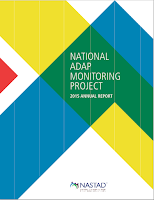Mandate, Mitigate, and Manage, perhaps the 3 M’s are the most overused verbs tossed around regularly and often throughout our vast and complex healthcare systems, all in the spirit of optimal outcomes for the patient, right? Perhaps some of the time. Hopefully patient outcomes are core to all parts of our healthcare universe – which includes hospitals, pharmacies/specialty pharmacies, outpatient surgery centers, home health care, rehabilitation centers, manufacturers, insurers, wholesalers, and the list goes on and on. Patient outcome language was certainly integrated into the Patient Protection and Affordable Care Act, “PPACA” or the often shortened “ACA.” And the Ryan White legislation throughout its now 25 year history has long since included patient health outcomes as an expectation for grantees managing this very important safety net for person living with HIV disease.
 |
| Photo Source: optimistically pessimistic |
But what about the “C” word, CHOICE or the “F” word, FREEDOM. Choice and the freedom to choose should be at the real heart of our continuum of care – choice or options that facilitate optimal health care outcomes. And if you have optimal health outcomes shouldn’t the economic benefits follow. Choice is the enemy of barriers to access (which can include the 3 M’s), both purposeful and unintentional. Choice and freedom are the best friends to individualism – what works for one patient doesn’t work for the next patient, thus having choice and the freedom to choose what works - serves the patient and all health care stakeholders in the best possible way.
You may be surprised to learn that your health care systems deprive you of the freedom to choose the option that serves you best and none is more glaring than many insurer mandated mail order policies. These policies can take many different forms with nuances too numerous to cite; however, two lawmakers in Florida have filed legislation for 2016 that will hopefully reverse this trend with persons living with HIV, Epilepsy, Diabetes and Hypertension. Senator Rene Garcia (R-Hialeah) and Representative Debbie Mayfield (R-Vero Beach) have filed Senate Bill 780 and House Bill 583, "The Prescription Freedom Act." These bills simply provide for patient choice of receiving their medications through a brick and mortar pharmacy or a mail order program – the insurer must not mandate that a patient access their medications from only one or the other and there cannot be financial advantage or leverage assigned to one over the other for the patient or for the insurer. Let freedom ring in health care choices and may options be abundant!
________
Disclaimer: Guest blogs do not necessarily reflect the views of the ADAP Advocacy Association, but rather they provide a neutral platform whereby the author serves to promote open, honest discussion about public health-related issues and updates.













